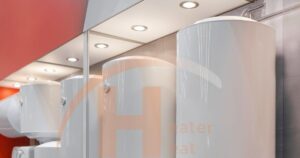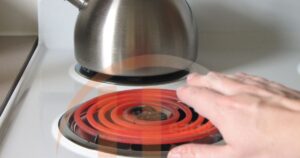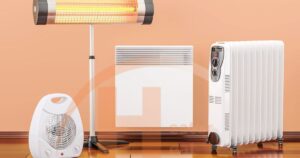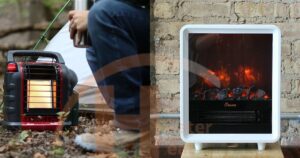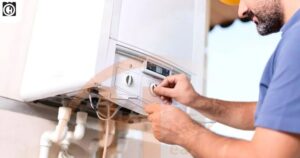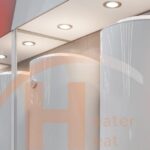A low-pressure hot water cylinder is designed to operate under lower-pressure conditions, making it suitable for specific applications where high pressure isn’t necessary. On the other hand, a main-pressure hot water cylinder operates under higher pressure, providing advantages in terms of water flow and distribution.
Imagine stepping into a warm shower on a chilly morning, only to discover that your hot water isn’t as invigorating as it should be. The secret lies in the type of hot water cylinder you have. Let’s unravel the mysteries behind low-pressure and main-pressure hot water cylinders, ensuring every shower becomes a soothing and satisfying experience.
Before diving into the intricacies, it’s essential to note that the choice between low-pressure and main-pressure hot water cylinders isn’t merely technical—it significantly impacts your daily comfort and utility bills. Whether you’re considering a traditional tank or the innovative Mini Tank Electric Water Heater, we’ll explore the unique features, applications, and pros and cons of each, empowering you to make a decision tailored to your specific needs. Get ready to upgrade your hot water experience!
What is Water Pressure

Water pressure is the force exerted by water molecules against any object in its path. It’s the invisible energy that propels water through pipes, ensuring it reaches your faucets and showerheads.
Imagine it as the heartbeat of your plumbing system, determining the speed and strength with which water flows. Low water pressure can be akin to a sluggish stream, while high water pressure is like a powerful river. Striking the right balance is crucial for a seamless and efficient water supply in your home.
Water pressure is measured in pounds per square inch (PSI) or bars. A standard residential water pressure typically falls between 40-80 PSI. Understanding the importance of water pressure sets the stage for delving into the specificities of low-pressure and main-pressure hot water cylinders, each tailored to different needs and preferences.
Low-Pressure Hot Water Cylinder
A low-pressure hot water cylinder is the unsung hero in scenarios where a gentler touch is required. This type of cylinder is best suited for small homes, apartments, or areas with minimal water pressure requirements. By operating at lower pressures, it ensures a steady and controlled flow of hot water, making it ideal for applications such as bathroom use, where excessive pressure is unnecessary.
The cost-effectiveness and simplicity of installation make low-pressure hot water cylinders a practical choice for those prioritizing efficiency in a compact living space. While low-pressure cylinders excel in specific situations, it’s essential to note potential drawbacks. The reduced pressure might limit their suitability for larger homes or locations with high-demand water usage.
Main Pressure Hot Water Cylinder
In the realm of water pressure dynamics, the main-pressure hot water cylinder takes center stage. This type operates under higher pressures, ensuring robust water flow and distribution throughout larger properties. Ideal for homes with multiple bathrooms and high-demand hot water needs, the main-pressure cylinder guarantees a consistently powerful stream, catering to the requirements of a bustling household.
Its versatility extends to accommodating various appliances simultaneously, making it a preferred choice for those seeking uncompromised performance. However, with great power comes considerations. The installation and maintenance costs of main-pressure hot water cylinders may be higher, and their energy consumption can impact utility bills.
Low-Pressure Hot Water Cylinder

In the realm of hot water solutions, the low-pressure hot water cylinder takes a distinctive approach, prioritizing simplicity and efficiency. Operating under lower pressure conditions, this type of cylinder is designed for settings where a gentler water flow suffices.
Its fundamental characteristic lies in its ability to provide a consistent and controlled supply of hot water without the need for excessive pressure. This makes it particularly suitable for smaller homes, apartments, or areas with limited water pressure, ensuring a reliable and cost-effective solution for daily needs.
Definition and characteristics
A low-pressure hot water cylinder is characterized by its design to function optimally at lower pressure levels compared to its main-pressure counterpart. Typically operating within the range of 15-40 PSI, these cylinders ensure a steady but more moderate water flow.
The construction often involves a simple and space-efficient design, making them suitable for installations where space is a premium. These cylinders are typically equipped with a relief valve to prevent overpressure situations, ensuring safety and reliability in operation.
Suitable applications
In the realm of applications, low-pressure hot water cylinders find their sweet spot in specific settings where moderate water pressure is sufficient. These include:
- Areas with lower water pressure infrastructure
- Compact homes and apartments with limited space
- Single-bathroom households where simultaneous water use is minimal
Their suitability for these applications makes them an economical and practical choice for those who prioritize functionality in a smaller living space.
Pros and cons
Embarking on the journey of understanding low-pressure hot water cylinders requires weighing their pros and cons. Here’s a glimpse to guide your decision-making process:
Pros
- Cost-effective solution, often with lower upfront and maintenance costs
- Ideal for small living spaces where a gentler water flow is adequate
- Energy-efficient, as they operate with lower pressure requirements
- Straightforward installation process
- Equipped with safety features such as relief valves
Cons
- Limited suitability for larger homes with higher water demand
- Potential for slower water flow compared to main-pressure cylinders
- May not accommodate multiple simultaneous water uses effectively
- Limited versatility in handling appliances with high water consumption
- Prone to issues if water pressure in the area increases beyond its capacity
Main Pressure Hot Water Cylinder

Enter the world of main-pressure hot water cylinders, where efficiency and potency take center stage. These cylinders operate under higher pressure conditions, ensuring a robust and consistent supply of hot water for larger households and demanding applications.
Unlike their low-pressure counterparts, main-pressure cylinders are designed to handle the dynamic water needs of homes with multiple bathrooms and high water consumption, providing an unparalleled level of performance and convenience.
Definition and key features
A main-pressure hot water cylinder distinguishes itself through its capacity to function optimally under elevated pressure levels, typically ranging between 40-80 PSI. These cylinders boast key features that contribute to their efficiency, such as a larger storage capacity, quicker heating elements, and a robust design capable of handling the demands of a bustling household. The construction often includes safety measures, such as pressure relief valves, to ensure the system’s integrity during operation.
Ideal scenarios for installation
Main-pressure hot water cylinders shine brightest in specific scenarios where a potent water supply is paramount. These include:
- Locations with reliable and consistent water pressure infrastructure
- Larger households with multiple bathrooms and simultaneous water usage
- Homes with high-demand appliances, such as dishwashers and washing machines
Their ideal scenarios for installation make them the go-to choice for those seeking an uninterrupted and powerful hot water experience in homes with varying water needs.
Advantages and disadvantages
Exploring the world of main-pressure hot water cylinders unveils a spectrum of advantages and disadvantages. Here’s a concise overview:
Advantages
- Consistent and powerful water flow, suitable for high-demand applications
- Ideal for homes with multiple bathrooms and simultaneous water use
- Versatile enough to handle various appliances with substantial water consumption
- Quick heating elements ensure minimal wait time for hot water
- Efficient in delivering a reliable and potent hot water supply
Disadvantages
- Increased energy consumption, impacting utility bills
- Requires more space for installation due to larger storage capacity
- Complexity in installation may necessitate professional assistance
- Potential for overpressurization issues if not properly regulated
- Higher upfront and maintenance costs compared to low-pressure cylinders
Comparison between Low Pressure and Main Pressure

When choosing between low-pressure and main-pressure hot water cylinders, understanding the nuances in their performance, cost implications, energy efficiency, and maintenance requirements becomes paramount. Let’s delve into the specifics to empower you in making an informed decision.
Performance Differences
- Low-Pressure: Suited for smaller homes with moderate water needs, offering a controlled water flow.
- Main Pressure: Ideal for larger households with high water demands, providing a potent and consistent water supply.
Cost Implications
- Low-Pressure: Generally more cost-effective in terms of upfront and maintenance expenses.
- Main Pressure: Requires a higher initial investment and may incur greater maintenance costs over time.
Energy Efficiency Considerations
- Low-Pressure: Operates with lower pressure requirements, contributing to energy efficiency.
- Main Pressure: Consumes more energy due to the higher pressure needed for robust water flow.
Maintenance Requirements
- Low-Pressure: Simple installation and maintenance procedures, often manageable without professional assistance.
- Main Pressure: Requires more attention and may involve professional services due to the complexity of the system.
Performance differences
The performance disparities between low-pressure and main-pressure hot water cylinders stem from their design and intended applications. Low-pressure cylinders cater to the needs of smaller households, offering a controlled and steady water flow that aligns with moderate water demands.
In contrast, main-pressure cylinders excel in larger homes, providing a robust and potent water supply capable of handling simultaneous water usage from multiple bathrooms and high-demand appliances. Understanding these performance differences allows homeowners to align their choices with their specific water consumption patterns, ensuring optimal functionality.
Cost implications
Embarking on the comparison journey, cost implications play a crucial role in decision-making. Low-pressure hot water cylinders, with their simpler design and lower-pressure operation, generally come with a more budget-friendly price tag, both in terms of initial installation and ongoing maintenance.
Main-pressure cylinders, equipped with larger storage capacities and higher pressure capabilities, demand a higher upfront investment and may incur greater maintenance expenses. It becomes a matter of balancing budget constraints with long-term performance requirements when navigating the cost implications of these two hot water cylinder options.
Energy efficiency considerations
In the realm of energy efficiency, the choice between low-pressure and main-pressure hot water cylinders becomes a balancing act. Low-pressure cylinders, operating with lower pressure requirements, contribute to energy efficiency by consuming less power.
Main-pressure cylinders, while delivering a potent water flow, tend to consume more energy due to the higher pressure needed for their robust performance. Homeowners must weigh their priorities, considering both water flow requirements and energy efficiency goals, to make an informed decision that aligns with their overall sustainability objectives.
Maintenance requirements
Maintenance considerations play a pivotal role in the longevity and reliability of hot water systems. Low-pressure hot water cylinders, with their simpler design and operation, often come with straightforward maintenance requirements. Homeowners may find that they can manage routine tasks without the need for professional assistance.
On the flip side, main-pressure cylinders, with their larger storage capacities and higher pressure operation, may necessitate more complex maintenance procedures that could benefit from professional services. Being aware of these maintenance differences allows homeowners to anticipate and plan for the level of care each system requires, ensuring the continued functionality of their hot water setup.
Choosing the Right Hot Water Cylinder for Your Needs

Navigating the choice between low-pressure and main-pressure hot water cylinders involves thoughtful consideration of your specific requirements. Assessing factors such as water usage patterns, household size, and budget constraints will guide you toward making the right decision for a hot water system that aligns seamlessly with your needs. Let’s delve into the key aspects of this decision-making process.
Assessing your specific requirements
To embark on the journey of choosing the right hot water cylinder, start by evaluating your specific requirements. Consider the following factors:
- Water Usage Patterns: Analyze how water is utilized in your household. Do you have multiple bathrooms or high-demand appliances that require simultaneous hot water usage? Understanding your water consumption patterns will help determine the level of performance needed for your hot water system.
- Household Size: The size of your household plays a crucial role in selecting the appropriate hot water cylinder. Larger families with multiple members may benefit from the robust performance of a main-pressure cylinder, while smaller households could find a low-pressure option more cost-effective.
- Space Availability: Assess the space available for installation. Low-pressure cylinders, known for their compact design, might be a suitable fit for homes with limited space. In contrast, main-pressure cylinders, with their larger storage capacities, may require more installation space.
Understanding these specific requirements sets the foundation for choosing a hot water cylinder that seamlessly integrates into your daily life, providing performance and efficiency tailored to your unique needs.
Budget considerations
While assessing your specific requirements is crucial, budget considerations also play a pivotal role in the decision-making process.
Investment in a hot water cylinder involves both upfront costs and long-term maintenance expenses. Low-pressure cylinders, with their simpler design and lower-pressure operation, generally come with a more budget-friendly price tag. This can be advantageous for those with immediate budget constraints or looking for a cost-effective solution in the long run.
On the other hand, main-pressure cylinders, offering robust performance and larger storage capacities, come with a higher initial investment and may incur greater maintenance costs over time. While the higher efficiency and performance may justify the cost for larger households, it’s essential to weigh the upfront expenses against the long-term benefits.
Conclusion
The choice between low-pressure and main-pressure hot water cylinders is a pivotal decision that significantly impacts daily comfort and utility costs. As we conclude this exploration, it’s evident that understanding the specific needs of your household is paramount in making an informed choice.
In weighing the options, consider the performance differences between the cylinders. Low-pressure systems, with their controlled water flow, cater to smaller homes, while main-pressure cylinders provide a robust supply for larger households. Cost implications also play a role; low-pressure cylinders offer budget-friendly solutions, while main-pressure systems come with a higher initial investment.
Energy efficiency considerations and maintenance requirements add layers to the decision-making process. Low-pressure cylinders contribute to energy efficiency, while main-pressure options may consume more energy. Maintenance requirements vary, with low-pressure cylinders being simpler to manage independently.
The ideal hot water cylinder choice balances performance, cost, energy efficiency, and maintenance considerations. Assessing your specific requirements, household size, and budget constraints will guide you toward a hot water system that seamlessly integrates into your daily life, providing performance and efficiency tailored to your unique needs.
Frequently Asked Questions
Which hot water cylinder is more cost-effective?
Low-pressure cylinders generally have lower upfront and maintenance costs.
Are main-pressure cylinders suitable for smaller homes?
Main-pressure cylinders are designed for larger households with higher water demands.
Do low-pressure cylinders impact energy bills?
Low-pressure cylinders are more energy-efficient due to lower pressure requirements.
What factors should I consider when choosing a hot water cylinder?
Consider water usage patterns, household size, space availability, and budget constraints.
Can I install a low-pressure cylinder in a large household?
While possible, low-pressure cylinders may not meet the high water demand of larger households effectively.

Mark Edward, with 6 years of expertise in Electric Heaters, is the author at heaterheat.com. His in-depth knowledge provides valuable insights into efficient heating solutions, making him a trusted resource.

